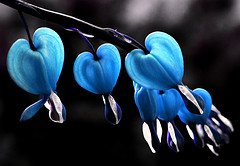is
the quiet voice
at the
end of the day
saying,
‘I will try again.’
Mary Anne Radmacher
After you have lost a loved one to suicide, you feel anything but powerful or strong. Most likely, you are at your most vulnerable, full of heartbreak and deep grief.
Suicide leaves a trail of uncertainties and questions. Knowledge can help make some sense of the unimaginable. When we learn more, we have a basis for comparison. We realize, perhaps, that our situation is not so unusual. Plus, we can accept more fully the biochemical or psychosocial elements that have led to a suicidal action. When we understand more, we are no longer so confused, confounded, or upset. We find steadier footing, and we find ourselves more emotionally and mentally stable. Indeed, knowledge can serve as a powerful healing ally.
Peace can never be achieved by force.
It can only be achieved by understanding.
Albert Einstein
 Sorrow is a universal human experience. It is feeling all too familiar these days.
Sorrow is a universal human experience. It is feeling all too familiar these days.
Years ago, when Haiti was slammed with devastating storms, a woman said when the first storm came through she lost her home, when the second one came through she lost all eight members of her family. She was now left with one plastic pale and the clothes on her back. That’s it, that’s all she had.
Two thoughts come to mind with the enormity of that kind of loss.
One, I am reminded of the concept of medicine as in the American Indian medicine pouch. The pouch might contain a feather or piece of bone that symbolized an experience where the individual came to understand their inherent strength of character, an aspect of self.
Medicine in this context is defined as power, and a power that can never be taken away from you. Therefore, it is not your car, your job, your bank account or your relationship. Medicine is what you are made of; it is the wealth of your experiences and wisdom. It is the you that has been stretched, fired and tempered by life. It is how you perceive the world, see yourself and choose to be in the world.
Loss of any variety or potency requires some personal medicine. Grief is crazy-making. It takes time to accept the unacceptable. It takes time to feel the undulations and reverberations of loss. The attachment has been severed; there is a hole. And, usually, all we want to do is fill the hole with what was. Because – and here is my flair for the obvious – loss mandates change. And change is often uncomfortable, new and unknown. This makes loss scary. The road ahead becomes rocky; walking becomes an effort to maintain balance and stay upright.
Sorrow stretches a heart and teaches us a whole new way to open our hearts and love. Sorrow cracks us apart and can bring us to the edge. Sorrow is transformative. It rearranges priorities and possibilities.
My second thought is of Blanche DuBois from Tennessee Williams’ “A Streetcar Named Desire.” Blanche allowed that she relied upon the kindness of strangers. I think all denominations of heartache require kindness.
And in what might be a kind of emotional homeopathy, what cures a broken heart is more heart medicine. Be it the sharing of a common experience or as Joan Didion described in A Year of Magical Thinking, the simple act of a cup of tea and sandwich left for her as the bleary-eyed and numb survivor. It can be the hand held in the hospital, a hot meal, shoes and a coat for the winter or the kind word that comforts the depleted and weary. In some ways it matters little what it is, what matters most in the connection, heart to heart, that says, “I care.”
We heal through our heart connections, be it the ones we have lost and hold close or be it the ones who bear witness to our grief journey and tend to our shattered hearts.
Grief, which is another way of loving, and caring, are potent medicines that speak directly of the power of the heart. And the elements of the heart — caring, acceptance, forgiveness, gratitude, kindness, generosity — lead us to healing.
 Suicide is considered a mental health issue. Why would someone want to take their own life? They must be crazy.
Suicide is considered a mental health issue. Why would someone want to take their own life? They must be crazy.
And, sometimes, they are. There are people who cannot function on a day-to-day basis, do not bathe for a year, receive messages to kill themselves or others, or believe their fillings are wired to Martian intelligence. There are very real neurological and biochemical influences that place these patients at high risk.
Untreated depression is considered the number one cause of suicide. If you, or someone you love, has experienced the reality of major depression, you know what a devastating, debilitating, and a biochemical illness it is. The depressed person does not see or think clearly. She is locked inside a black, airless box that offers no light or perspective.
Hospitalization and medication have saved many lives. William Styron, in his memoir, Darkness Visible: A Memoir of Madness (1992), eloquently detailed his descent into, and recovery from, depression, which he called, “a howling tempest in the brain . . . dreadful, pouncing seizures of anxiety.” Styron understood the stranglehold of depression: “The pain of severe depression is quite unimaginable to those who have not suffered it, and it kills in many instances because its anguish can no longer be borne.”
Along with major depressive disorder, the psychiatric illnesses that can lead to suicidal actions are bipolar disorder (formerly known as manic depression), borderline personality disorder, post-traumatic stress disorder (PTSD), schizophrenia, and other psychotic disorders.
Did you know that the single greatest risk factor for suicide is a history of suicidal behaviors and attempts? Of course, this makes perfect sense, and if someone you love has these behavior patterns, take them seriously.
If you have lived with a loved one who has suffered from any of these mental illnesses, your life has not been an easy one. Nor has theirs. No one chooses to live with a debilitating psychiatric or psychological disorder that frequently moves in and out of crisis. It is painful, chaotic, exhausting, and terrifying for both the patient and loved ones. Ongoing treatment and meds are usually necessary to help make life more manageable.
A psychiatrist colleague of mine, once shared this with me: The majority of her patients who ended up in the hospital emergency room had stopped taking their medications, which then precipitated the subsequent disintegration.
Whereas, Nancy Kehoe, PhD, RSCJ, a Harvard Medical School professor, clinical psychologist, and nun, offered a new take on psychiatric hospitalizations during a lecture I attended decades ago in Boston. She allowed that for many of her patients, a psychiatric hospital gave them a much-needed sense of community and connection. And, with that sense of community and connection, they were able to heal. And by heal, I mean to find some stability so that they could return to the world as a functioning participant.
This made me think of the African tribes as well as many of the Indigenous people who work as a community and address the soul to help those in pain (of any kind) to find relief. There are many paths to wellness and wholeness.
 This traditional Gaelic blessing is both meditation and prayer to me. The cadence and rhythm of the words moves me into a place of stillness and expansiveness.
This traditional Gaelic blessing is both meditation and prayer to me. The cadence and rhythm of the words moves me into a place of stillness and expansiveness.
In our topsy-turvy, fast-paced world, may I offer you this bouquet of soulful words.
Deep peace, deep peace of the running wave to you;
Deep peace of the flowing air to you;
Deep peace of the quiet earth to you;
Deep peace of the shining stars to you;
Deep peace of the gentle night to you;
Moon and stars pour their healing light on you.
Deep peace to you.
Deep peace to you.
—Traditional Gaelic Blessing
Jungian analyst, poet, and cantadora (keeper of the old stories), Clarissa Pinkola Estes tells us that the wise, elder women of her family would say,
“The only miracle medicine we have is each other.”
And so it is with suicide as well. Allow yourself to be held and heard as you walk your personal path of grief and sorrow.
As we continue to look at some of the whys suicide has been chosen, let’s consider the impact of cumulative stressors and trauma:
A darling Celtic client of mine had a great saying, “Life does life.” She was right. It does.
There are times when life throws us a major curveball and we are seriously rattled. We lose our footing, and our wherewithal is seriously diminished. If there are continuous stressors such as disasters, losses, medical conditions, and financial issues, a person who has been functioning well may begin to feel the onslaught, for it is akin to non-stop blows to the body.
Stress is cumulative, and non-stop stress allows no room to take a breath, to process, or assess. You are going from one thing to another. Before you know it, you are holding on by a thread. Life has become overwhelming. There seems to be no meaning and no point to it all. You are psychologically shattered. Then one more stressor knocks at your door, and you can’t imagine how you are going to keep going on like this. You have tried your best, but you are tired. You are worn out.
Think of the rash of “suicides by economic crises” in several European countries. Imagine the suddenly homeless, the ostracized and shunned, the failed crops, the medical emergencies, the bereft husband, and the bankrupt. They have endured much, and this accumulation of stress and being powerless can prompt suicidal feelings.
Be it an injury to the body, mind, soul, or an emotional shock that upends a life, trauma is pervasive in our world. Trauma can be a sudden death, combat service, childhood sexual abuse, a natural disaster, terrorism, catastrophic illness, and violence such as unrelenting bullying.
For some, that acute stress and shock of the experience(s) does not fade away or diminish; it becomes entrenched in an insidious way. The body-whacking, heart-thumping, mind-numbing, horrifying, excruciating, and unfathomable traumatic experience holds a person hostage in a complete mind-body-heart hell.
This chronic pattern of neurological and physical responses is called post-traumatic stress disorder (PTSD). This is particularly prevalent, and most understandable, among survivors of childhood sexual abuse, victims of bullying, and combat soldiers. They are at high risk for suicide given the horrors they have lived through, have been tormented by, and have survived.
Imagine the VA Hospital and a group of vets waiting to attend a PTSD treatment group. Their hands are shoved into their pockets. Very few are holding cups of coffee because their hands shake from the increased cortisol in their systems.
Imagine the student who has been bullied to such an extreme that he cannot focus on his classes. He sits in terror waiting for the next attack and wondering how he can protect himself.
Imagine a sexual abuse support group. The women share their difficulties sleeping due to nightmares replaying nightly. The terror and the body memories flood their systems frequently; sleep is anathema. Pain is a constant companion.
For those in the hell of PTSD, suicide can be seen as an option to end the recurring cycles of pain and horror. Sometimes, too much is just too much.

Go gently with your big heart. It is not a curse or a burden, but a gift that allows you to hold the universe in your being with love.
Go gently with your big heart. It is the doorway to mystery, the path to mastery and the road to compassion.
Go gently with your big heart. It is the opening that allows you to be your best, reach your fullest and connect with the divine.
Go gently with your big heart, it is the answer to your prayers.
Sometimes, we forget that grief is kind of love.
And we know love. Love, like an unending vine of shiny green leaves, winds and curls itself into the crevices of our lives and tenderly wraps us int its embrace.
We have met love, witnessed love, and, even, challenged love. We have held, hugged, laughed, cried, whispered and howled because of love. Love reverberates from our deepest being, rattles our knees, expands our vision and hums in our ears. Love is the current that turns us upside-down and inside-out. We are never the same after love and, most certainly, we are never the same after grief. Love and grief are energies that transform us into something more, something better.
“Walk fearlessly into the house of mourning. For grief is just love squaring up to its oldest enemy, and after all these mortal human years love is up to the challenge.”
Kate Braestrup